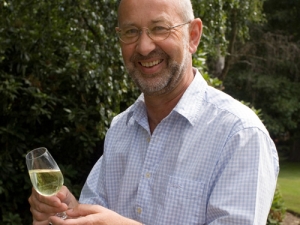Ultraviolet radiation (UV) could be used to enhance the quality of many crops, says Lincoln University UV-B expert Professor Brian Jordan.
UV-B levels vary across the Earth's surface and with changes in altitude. Levels also vary considerably between the two hemispheres, with some sites in the Southern Hemisphere receiving almost 40% more than those in the Northern Hemisphere.
Adding to the complexity is the wide variety of plant responses to UV-B.
Since the first evidence of a hole in the ozone layer over Antarctica in 1985, scientists have been concerned about the damaging consequences and stress caused by excess exposure to UV-B. This has limited exploration of the possibilities to exploit biological responses to UV for agronomic gain.
But the discovery in 2011 of a specific UV-B photoreceptor, one of many mechanisms plants have to mediate acclimation responses, prompted renewed interest in UV worldwide.
"Until now UV-B has only been considered as a damaging radiation, but it is now thought to have a more positive role in plant growth and development. Consequently UV-B treatments are being developed as innovative approaches to improve horticulture." says Jordan.
With so little certainty around levels of radiation in future, research focused on understanding the beneficial aspects of UV-B radiation within the context of food production is crucial.
"Key benefits are that UV-B reduces pests and diseases, enhances nutritional value in the form of increased antioxidants and it can be used in glasshouse environments to enhance plant quality and productivity," says Jordan.
A major research collaboration with Plant and Food Research is aimed at understanding the quality of New Zealand wines, specifically Sauvignon Blanc, and now looking at whether UV-B affects the red grape colour and taste of Pinot Noir wine.
Jordan says the unique environment of high light intensity, clear skies and high UV-B can have a profound influence on the biochemistry of New Zealand grape vine cultivars and on the resulting wines.
"It is particularly important to understand UV-B induced responses now and in a future climate change scenario."
Jordan's research focuses on canopy management - leaf removal that is a common practice to reduce disease pressure - and the relationship to the biochemical composition at harvest. The results show a very strong relationship between UV-B exposure and antioxidant compounds called flavonoids, which are important components of wine.
"There are so many questions to answer from predicting the influence of UV-B in a changing climate to understanding the responses at a molecular level.
"One of the greatest advantages and pleasures of my research career working on UV-B has been the international collaboration that I have experienced. Openness and sharing of scientific knowledge will always be the best way to make progress."












